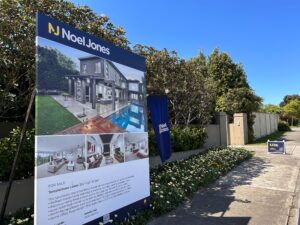The end of the financial year can be a busy time for property investors, that’s why we’re here to remind you of the benefits of arranging a depreciation schedule before 30 June.
What is depreciation?
Depreciation is the natural wear and tear of a building and the assets within it over time. The Australian Taxation office (ATO) allows owners of income-producing properties to claim depreciation as a tax deduction.
There are two types of depreciation. Capital works (Division 43) is claimed on the building’s structure and items that are permanently fixed to the property. And plant and equipment (Division 40) are items which are easily removable from the property or are mechanical in nature.
Depreciation is a non-cash deduction, meaning an investor doesn’t need to spend any money to be eligible to make a claim. Because of this, depreciation deductions are frequently overlooked.
Failing to claim depreciation can mean missing out on thousands of dollars.
Claim the cost of your schedule straight away
To maximise deductions and claim all eligible assets, you should organise a tax depreciation schedule as soon after you purchase an investment property.
A BMT depreciation schedule has a one-off cost that lasts the life of the property (forty years) and will ensure all claims are maximised and are fully ATO compliant.
The cost of the depreciation schedule is 100 per cent tax deductible, and if you order a depreciation schedule before 30 June you can claim the fee straight back that financial year.
This also reduces the risk of forgetting to claim the depreciation schedule’s fee as a deduction in the following financial year.
Partial year claims
You don’t have to have own a property for a full financial year before claiming depreciation deductions.
You can claim depreciation if you have owned a property for a short time before the end of the financial year, even if that is weeks or days.
The depreciation value of the assets will be calculated by how long the property has been owned. For instance, if the property has been owned and rented out for a period of three months, the owner is eligible for 25 percent of the yearly deductions.
Receive payments regularly using Pay as You Go (PAYG)
By arranging a depreciation schedule sooner, you can access additional cash flow throughout the year by incorporating a PAYG withholding variation.
With the help of your accountant, submitting a PAYG withholding variation will estimate your expected tax return for the financial year, allowing your employer to take less tax out of your wages.
It’s important to speak with your specialist quantity surveyor to organise a tax depreciation schedule before submitting a PAYG withholding variation as this information will be used to help accurately estimate your tax return.
You will still need to visit your accountant at the end of the financial year so they can calculate the actual amount of tax liability.
Claim missed deductions
It is always advisable to stay on top of your finances by claiming deductions in the same applicable year, as delaying your claim will only add extra confusion and stress to your next tax return.
However, if previous depreciation deductions weren’t claimed, the ATO allows you to recover missed payments from past financial years by adjusting your tax return.
This is useful for investors who were previously unaware of depreciation deductions.
Obtaining your tax depreciation schedule before June 30 is important if you want to maximise your returns and keep your finances on track.
To find out how you can organise a depreciation schedule before 30 June contact the tax depreciation experts BMT on 1300 726 728 or Request a Quote.
Bradley Beer (B. Con. Mgt, AAIQS, MRICS, AVAA) is the Chief Executive Officer of BMT Tax Depreciation.
Please contact 1300 728 726 or visit bmtqs.com.au for Australia-wide service.





